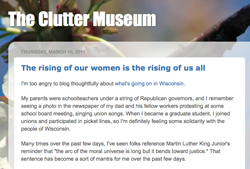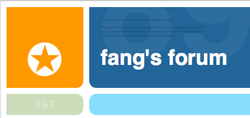I found myself in a meeting on Friday with several science faculty, and I had the opportunity to share with them what I’m doing in my Digital History course this semester. When I mentioned in particular that my students were mapping the neighborhood’s irrigation ditches, an engineering professor asked me how they were doing that. I said I had a student minoring in GIS and she’d likely in the end use Google Maps or maybe even Illustrator just to indicate where the water flows through the neighborhood and where it disappears underground.
She clarified her question. “No. . . How do you get your students to do things you haven’t taught them to do? If we ask our students to do something new, they say they can’t do it because we haven’t yet taught them how to do it.”
I pointed out that history, and the humanities more generally, provided students with plenty of opportunities to take initiative in research and communication, and that we tried to cultivate independent thinking in our students. Plus, I try to model this spirit of inquiry in the classroom. I pointed out (once again) that I’m a history professor without any degrees in history, and I’m a technologist without any formal training in that field. I’ve decided to eschew impostor syndrome in favor of openly making up my projects and career as I go along.
The professors seemed a bit flabbergasted. Maybe they hadn’t ever considered the humanities as anything other than courses that taught students grammar and asked them to read a lot.
For me, job #1 is ensuring students are critical and creative thinkers who can use technology thoughtfully so they can both tackle big problems and make a living. I don’t understand how anyone could enjoy—or even think it was morally defensible—to teach a course that didn’t inspire students to stretch themselves, that required them merely to learn content or basic skills. If your students don’t get past “comprehension” in Bloom’s Taxonomy, you’re doing it wrong. Students need to get to synthesis, evaluation, and creation in as many class meetings as possible.
In light of this discovery that the university apparently is producing STEM students who lack initiative and intellectual curiosity, I’ve just suggested it fund an interdisciplinary project that would bring some of this humanities secret sauce to STEM students. Here’s a smidgeon from my response to a CFP aimed at gauging faculty interest in new, interdisciplinary projects:
a) Project description – provide a short description of your project idea
Students need more opportunities to practice solving problems across disciplines, and Idahoans often need low-cost solutions to the challenges they face. My years in the classroom have taught me that humanities students (and especially history students), if given the right tools, support, and encouragement, are both persistent and creative researchers and makers. They seek out new knowledge, teach themselves and each other skills, and work together collaboratively with little complaint or friction. I’d like to bring this “humanities secret sauce” to students across the disciplines, as I’ve heard from faculty that their students don’t always demonstrate this initiative and ability to learn new things—or synthesize their knowledge and skills—outside the classroom.
Accordingly, I propose creating the Curiosity Shop, a place where the Boise State community, as well as everyday Idahoans, can bring persistent issues or problems, and students can—working alongside these individuals—address these challenges using research, experimentation, and communication. The atmosphere of the Curiosity Shop will be permeated with curiosity, deep inquiry, empathy, creativity, improvisation, and perseverance. Working in multidisciplinary teams, students will learn to prioritize challenges, research possible interventions, and then propose, fund, implement, iterate, and evaluate their solutions.
b) What are the broad research questions?
- Are there differences in how students in the arts, humanities, social sciences, and sciences tackle problem-solving? If so, what are these differences, whence do they emerge, and do students’ problem-solving styles change during collaboration on interdisciplinary teams?
- What kinds of technologies, digital or otherwise, do students employ while solving diverse problems? What patterns emerge in this use, and what does their use say about students’ habits, beliefs, and values?
- How do these students’ problem-solving styles and choices of technology jibe with or deviate from employers’ expectations of entry-level employees’ knowledge, skills, and abilities in various fields?
Here’s hoping the appropriate committee bites. Our students can change the world if we let them.


This is fantastic and has some similarities to questions we’re looking at in the Center for Design in the Public Interest (DIPI) at Davis. More fodder for the long conversations we will manage to have one of these years…
Thanks, Sarah. I’m treading into a space clearly designed for STEM folks, so we’ll see if I can open up some minds to the benefits of investing in the humanities classroom.
That looks superb! I hope it goes through and we’ll get to hear more about developments!
Leslie, I saw the position opening via HIstoriann and wondered if you or any of your museum studies folks might be interested: http://umass.interviewexchange.com/jobofferdetails.jsp;jsessionid=396E45FCB853A68479C9C69D9655B854;jsessionid=95B42ADAB770E9E1FAE12FFCF8AFE144?JOBID=54202